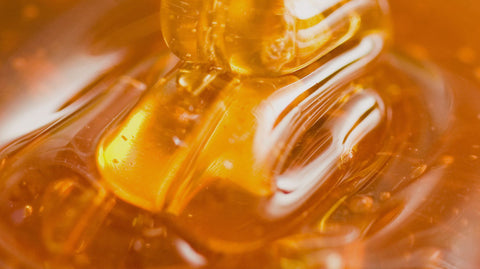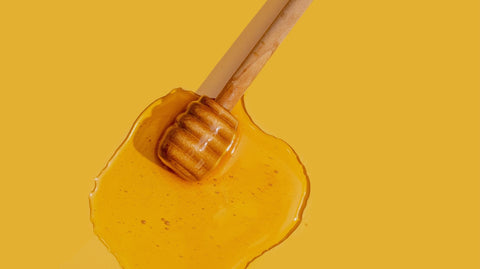Single-source honey tastes better because it reflects the unique flavors of one floral source or region, offering a richer, more distinct profile. It’s also better for you since it's often raw, less processed, and packed with natural enzymes, antioxidants, and traceable purity.
Not all honey is created equal. If you’ve only tasted the generic, store-bought kind, you might be surprised to learn just how much variety real honey can offer, especially when it comes from a single floral source. Single-source honey is harvested from bees that collect nectar from just one type of flower, resulting in a flavor that’s pure, unblended, and true to its origin.
In this blog, we’ll explore why single-source honey tastes better and why it’s also a smarter choice for your health. From bold and earthy buckwheat to bright and citrusy basswood, each variety offers a unique experience shaped by the flower it comes from. Whether you're a honey enthusiast or just curious about what makes some jars stand out from the rest, this guide will help you understand the value and beauty of honey at its most natural.
What Is Single-Source Honey
Single-source honey delivers a flavor experience that’s far richer and more complex than blended varieties. Because it’s harvested from one floral source at a specific time and place, the resulting taste reflects the unique characteristics of that bloom and environment. For example, Buckwheat honey is known for its deep, molasses-like intensity, while Basswood offers a lighter, minty profile. Sweet Clover provides smooth, buttery sweetness, and Dandelion has a bold, herbal edge. These differences are real, and noticeable.
In contrast, commercial honey is often a blend from multiple sources and countries. When honey is blended from multiple sources, those delicate and distinct flavor notes get lost. . These blends are processed to create uniformity, sacrificing the individuality that makes honey a culinary experience.
But with single-source honey, you can taste the individuality of each variety. It’s not just about sweetness; it’s about complexity, aroma, and a sense of place. Every jar tells a different story, and that’s what makes it such a flavorful, and rewarding, choice for honey lovers. With single-source honey, you can explore different varieties just like you would with cheeses or coffees, each one offering a new flavor journey that reflects the bees’ specific foraging environment.
Health Benefits of Single-Source Honey
Single-source honey offers more than just great flavor, it also tends to be more beneficial for your health. Because it is typically raw and minimally processed, it retains a higher concentration of natural enzymes, antioxidants, and phytonutrients that can support your immune system and overall wellness. These compounds are often lost during the high-heat processing and filtration used in mass-produced honey, making single-source options a more nutrient-rich choice.
Another advantage of single-source honey is its traceability and purity. Knowing exactly where your honey comes from, and which flowers the bees visited, means you’re less likely to consume hidden additives, sugars, or syrups often found in blended or imported varieties.
For allergy sufferers, local single-source honey may even help ease symptoms by exposing the body to small amounts of local pollen. With its clean profile and natural integrity, single-source honey delivers both peace of mind and real health benefits in every spoonful.
Why Transparency Matters in Honey Production
Transparency in honey production plays a crucial role in supporting ethical beekeeping and sustainable practices. When you choose single-source honey from producers who disclose exactly where and how their honey is harvested, you're more likely to support operations that prioritize bee health, avoid harmful pesticides, and practice responsible hive management.
Ethical beekeepers often allow their bees to forage naturally, harvest only what the bees can spare, and avoid practices that stress or exploit the hive. This respect for nature not only protects pollinators but also results in a more wholesome, high-quality product. Without transparency, it’s nearly impossible to know if the honey you’re buying comes from. By choosing honey with a clear origin and honest labeling, you help create demand for responsible beekeeping and reward the producers who are doing things the right way - for the bees, the planet, and your health.
How to Choose the Best Single-Source Honey
Choosing the best single-source honey starts with knowing what to look for on the label. Look for terms like “raw,” “unfiltered,” and “single-source” or “single-origin,” which indicate that the honey has undergone minimal processing and hasn’t been blended with other batches.
The label should also list the floral source, such as Buckwheat, Basswood, Dandelion, or Sweet Clover. The more specific the information, the more likely you’re getting an authentic, high-quality product.
You can also rely on trusted companie such as Ames Farm that prioritize transparency and ethical sourcing. Taste testing different varieties is one of the best ways to discover your preferences, as each floral source offers a distinct flavor profile. Whether you like the bold intensity of Buckwheat or the light sweetness of Basswood, choosing the best single-source honey is all about finding a product that reflects nature’s diversity, without additives, shortcuts, or hidden ingredients.
How to Enjoy Single-Source Honey
One of the best things about single-source honey is its versatility, it’s not just for tea or toast. Because each variety has its own unique flavor, you can use it to enhance both sweet and savory dishes, or enjoy it on its own to appreciate its complexity. Whether you’re savoring the herbal notes of Dandelion or the deep richness of Buckwheat, single-source honey can elevate everyday moments into something special.
Here are a few delicious ways to enjoy it:
- Drizzle over yogurt, oatmeal, or pancakes for a naturally sweet, floral touch
- Pair with cheeses like brie, blue cheese, or goat cheese to balance sweet and savory
- Stir into tea or coffee to add subtle depth without refined sugar
- Use in salad dressings or glazes for meats and roasted vegetables
- Spread on warm toast or biscuits to fully enjoy the texture and flavor
- Spoon straight from the jar to taste the raw, unblended character of each variety
- Use in baking to replace sugar and add moisture and complexity
- Add to fruit or nut platters for a simple, elegant snack or appetizer
No matter how you use it, single-source honey turns everyday eating into a chance to explore nature’s variety, one spoonful at a time.
Final Thoughts About Single-Source Honey
Single-source honey offers a tasting experience and nutritional value that simply can’t be matched by blended, mass-produced alternatives. With its pure flavor, traceable origin, and ties to ethical beekeeping, it’s a small but meaningful way to enjoy food that’s closer to nature. Whether you’re savoring it on toast or pairing it with cheese, each jar tells the story of a single bloom, and reminds us that real honey is as complex and beautiful as the flowers it comes from.
If you’re ready to experience the true taste of single-source honey, Ames Farm offers some of the finest examples available. With each jar harvested from a single hive location and floral source in Minnesota, Ames Farm preserves the natural flavor, texture, and seasonal character of every bloom, from the bold richness of Buckwheat to the delicate notes of Basswood and Sweet Clover. Their commitment to ethical beekeeping, sustainability, and small-batch craftsmanship makes Ames Farm a trusted choice for honey lovers who value purity, transparency, and exceptional taste.
Frequently Asked Questions About Single Source Honey
What is single-source honey?
Single-source honey comes from bees that gather nectar from one type of flower or one location during a specific time, resulting in a pure, unblended product with distinct flavor and characteristics.
How is single-source honey different from regular honey?
Regular honey is often blended from multiple sources to create a uniform taste, while single-source honey maintains the unique flavor, aroma, and color of a specific floral origin.
Does single-source honey taste different depending on the flower?
Yes! Each floral source produces honey with its own distinct flavor profile, ranging from light and citrusy to dark and bold.
Is single-source honey healthier than blended honey?
Single-source honey is often raw and minimally processed, which helps retain natural enzymes, antioxidants, and pollen that can be lost in mass-produced honey.
Where can I find high-quality single-source honey?
Look for small-batch producers who clearly label the floral source and location, like Ames Farm, which offers a wide range of single-source varieties harvested from their Minnesota apiaries.



